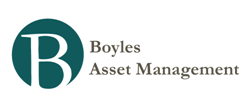GMO’s Market Outlook: "Disappointingly Overvalued"
Opportunities across US and foreign assets classes are unattractive, according to Ben Inker, the head of asset allocation at the Boston-based global money manager Grantham, Mayo, van Otterloo & Co. (GMO). Neither the equity nor fixed income markets hold the potential for investors to earn acceptable inflation-adjusted returns, Inker said.
Inker delivered the keynote address at a conference on the global outlook and investment strategies held at Babson College on March 25.
Markets were “desperately overvalued” in mid-2007, prior to the financial crisis, Inker said. Since then, they have gone from “very interestingly cheap” in March of 2009 to today’s level, which he called “disappointingly overvalued.”
…
“This is where the life of an asset allocator gets very difficult,” he said. “Unfortunately right now we are not exactly sure what the right thing to do with our clients’ money is.”
Normalized P/E ratios are not extraordinarily rich, Inker said. He said the market is typically valued at 15 times earnings, and today it is priced at a ratio of 18.
A bigger issue, though, is that corporate profits are “unsustainably high and are going to come down,” Inker said. He said that we have just witnessed the fastest recovery of corporate profits in history, and they are already well above the average for other post-recession periods.
Analysts have forecast that profit margins are going to get to a level never seen before in history, Inker said. One reason is that capacity utilization in the economy is very low, and when it has been low in the past margins have expanded.
Inker doesn’t believe increased utilization will drive profits higher in this environment. Profits are defined in economic terms as the sum of net investments and dividends, less savings by the rest of the economy. The latter two terms tend to be fairly stable over time, and changes in net investments are what have caused profits to rise and fall, he said.
In the last 20 years, though, higher profits have been more a result of the government running a 9% deficit, Inker said, than of higher investment. Inker said that from 1952-1986 profits and capacity utilization had a positive correlation of 0.57; since 1987, however, that correlation was -0.17.
Even if net investment were to triple – which Inker said isn’t actually that hard to do – and if the government went to a “sustainable level of deficits, there just isn’t enough money out there for corporations.”
Bonds offer disappointing prospects for other reasons. Government yields are now at 60-year lows, Inker said. The last time yields were this low was in the 1940s, and bonds then were a “spectacularly bad investment for length of time longer than most professional careers,” he said. Indeed, for the next 40 years, bond investors suffered worse returns than cash investors.
- Hussman Weekly Market Comment: Do Foreign Profits Explain Elevated Profit Margins? No.
Link to: Do Foreign Profits Explain Elevated Profit Margins? No.The bottom line is simple. Corporate after-tax profits as a share of GDP, GNP (or even net national product if one wishes to use that number) are steeply above historical norms. This fact...
- Barron’s Interview With Ben Inker: The Best Bets In A Dangerous Global Market
Lucky sevens? Not so fast. Asset manager GMO's seven-year forecast doesn't show investors having much luck over that span, much less big returns. The Boston-based value shop, which oversees about $112 billion, doesn't like the broad U.S. stock...
- Morningstar Q&a With Ben Inker
Inker: The behavior of corporate profits in the U.S. for the last 10 or 15 years is weird. It doesn't follow a standard capitalist script. If you've got a situation where there is a very high return on capital, which there has been on average...
- Jeremy Grantham: Us Stocks Are Expensive And Bonds Are Disgusting
Jeremy Grantham, who has consistently identified overpricing in the US equity markets – he flagged both the Dot Com bubble and the irrational pricing that preceded the financial crisis, for instance – said last week that US stocks are “a little...
- Hussman Weekly Market Comment: A False Sense Of Security
One of the aspects of the market that is most likely to confuse investors here is the wide range of opinions about valuation, with some analysts arguing that stocks are cheap or fairly valued, and others - including Jeremy Grantham, Albert Edwards, and...

